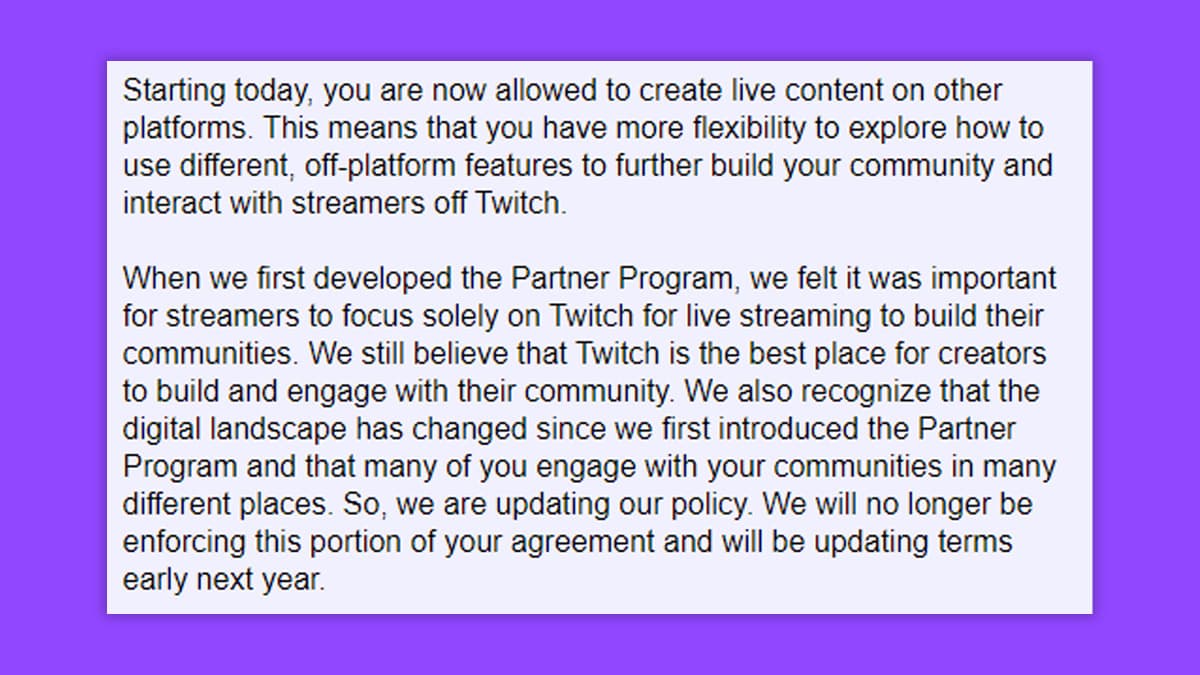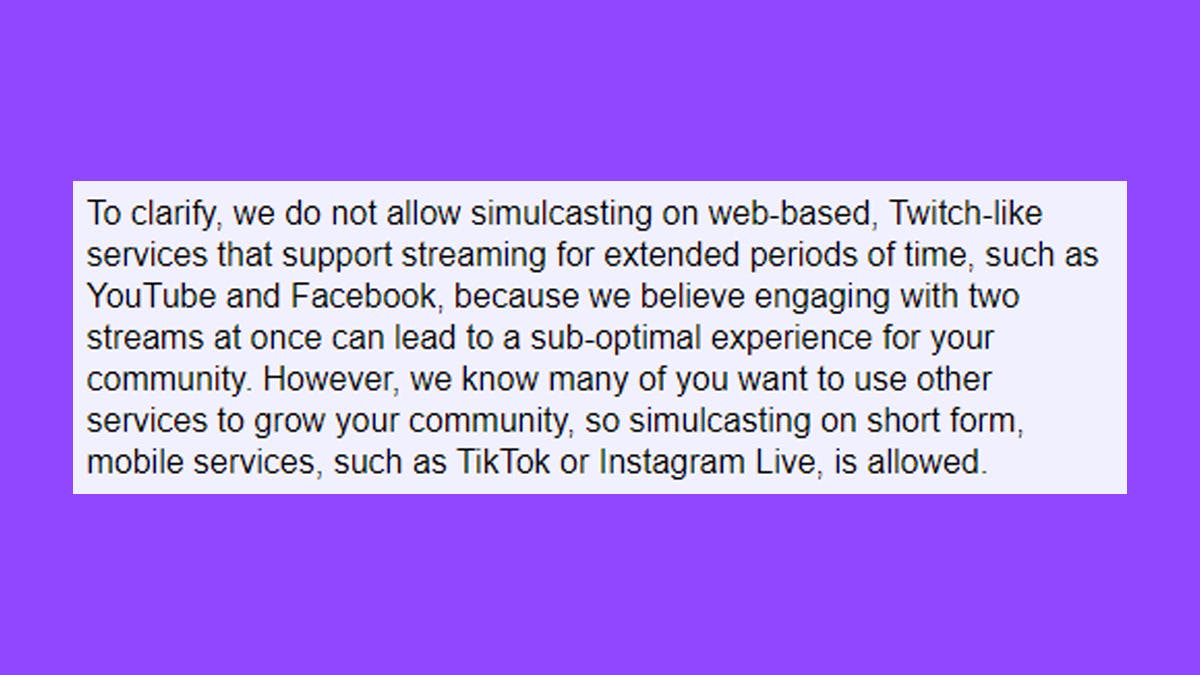Twitch is removing its partner exclusivity clause, allowing creators to stream on YouTube, Facebook, TikTok, and Instagram.
On August 23rd, Twitch announced the end of its exclusivity clause and that its partnered creators are now allowed to create live content on other platforms. This includes websites and apps such as YouTube, Facebook, Instagram, and TikTok.
Twitch’s Exclusivity Announcement
In an email sent to their partnered creators, Twitch announced that the partner exclusivity clause will no longer be enforced. Twitch will be updating the terms of the agreement early next year.

Twitch stated: “We also recognize that the digital landscape has changed since we first introduced the Partner Program and that many of you engage with your communities in many different places.”
With the rise of TikTok and Instagram’s focus on video content, creators are utilizing every avenue to grow their community.
Twitch’s discoverability has been the subject of constant critique and this could be an attempt at patching the issue.
Simulcasting/Multi-Streaming: Everything You Need to Know
While the exclusivity clause will no longer be enforced, Twitch clarified its stance on simulcasting. They stated that simulcasting on “Twitch-like” platforms, such as YouTube or Facebook, is not allowed.
This means that creators cannot stream on Twitch and another platform at the same time. Creators can end their Twitch live stream and immediately start a live stream on another platform.

Twitch’s reasoning behind not allowing simulcasting on longer-form content platforms is that they “believe engaging with two streams at once can lead to a sub-optimal experience for your community.”
However, creators may simulcast on mobile apps, such as TikTok or Instagram, under the new terms.
Before the announcement, many streamers simulcasted on TikTok and encouraged their viewers to migrate to Twitch, despite the exclusivity clause. Streamers got around the exclusivity clause by streaming a different camera angle and not showing gameplay.
The ability to simulcast on TikTok and Instagram is a win for streamers who use the platforms for discoverability.
Tune in to Patch Notes
For more information on Twitch’s removal of the exclusivity clause, tune in to a new episode of Patch Notes. It's hosted by Twitch’s Director of Community Marketing and Production, Mary Kish, on August 25th at 12pm PT.